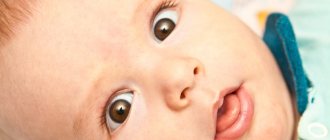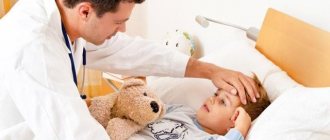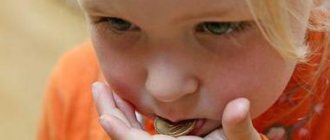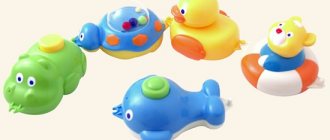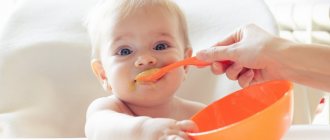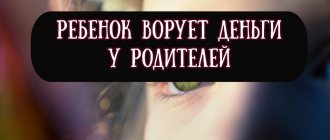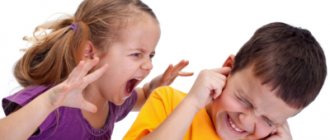Cases of foreign object entry
Now let’s look at cases when specific objects get into the nose, and what first aid is provided:
- Ascorbinka
Very often in such cases, ascorbic acid, under the influence of the mucous environment, dissolves in the nose and comes out with secretions. If the ascorbic acid tablet is large, you can carefully hold one nostril (empty) and ask the child to exhale sharply through the other (stuffed), but be sure to warn and make sure that the child inhales air through the mouth and not the nose. Otherwise, you can only worsen the situation by allowing the vitamin to enter the respiratory tract.
- Tablet
The situation is similar to the previous one, but if it is known for sure that the drug that got into the nose is intended for use by adults, call an ambulance.
- small toy
As a rule, this is a small construction part (for example, Lego), which has a non-streamlined shape, and therefore is more difficult to remove independently at home.
- Apple piece, food fragments
Any food is of organic origin, and therefore has properties such as rotting. In these cases, a rinsing procedure is necessary, which will be done in a medical facility.
- Plasticine
The property of this material is such that in warmth it softens greatly, and if the child picks his nose with his finger, he can smear the plasticine along the walls of the mucous surface. Professional intervention by an otaryngologist is necessary.
- Bean, pea, bead
We carry out identical actions described above. But in medicine, cases are described when adults catch children at the moment of the last “stuffing” of round objects into their noses. Meanwhile, the child may already have a whole “clip” of them. Contact your doctor. In addition, bodies of natural origin are able to hatch and begin to grow in a humid environment.
- Seed
Most often, independent actions do not lead to a positive result, and you cannot do without qualified help.
- Cotton wool, foam rubber, paper
Parents themselves can accidentally insert it if, for example, the head of a cotton swab is not properly secured. Most often, such an object comes out as a result of sneezing, since villi and fibers irritate the nasal mucosa. Otherwise, you need to consult a doctor.
- Coin
It is a solid, naturally insoluble object. Standing across the nasopharynx can significantly worsen the breathing process. There is a great danger if it enters the trachea, it can completely block breathing and cause asphyxia. You need to urgently call an ambulance.
Ways of foreign bodies entering the nose
From the outside, that is, from the outside:
- children personally put something into their nose;
- some particles may end up in the nose as a result of medical manipulations (pieces of bandages, cotton wool);
- on the street, various small insects can fly into your nose;
- The baby may inhale fluff, particles of wool or pollen.
From inside:
- if a child chokes while eating and starts coughing, pieces of food enter the nasal cavity through the choanae;
- It happens that food particles get into the nose when the child vomits.
Diagnostics
An otolaryngologist deals with issues related to finding and removing foreign bodies from the nose.
The doctor listens to the patient's complaints, after which he performs rhinoscopy (examination of the nasal passages using special mirrors). Anterior rhinoscopy reveals the edematous mucous membrane of the nasal cavity, in which a foreign body is found. Most often it is located at the anterior end of the inferior turbinate. When performing anterior rhinoscopy, moving white larvae are sometimes visible - living foreign bodies.
An X-ray examination is advisable if the foreign body is radiopaque, that is, if the object in the nose is metallic. In this case, the object appears as a dark spot on the x-ray. Manipulation around a foreign body in the nose can cause bleeding.
A foreign body can enter the maxillary sinus, causing sinusitis or diseases of the lacrimal duct.
The lower nasal passage is the most common place for a foreign body to arrive (between the nasal septum and the inferior concha). In case of injury, a foreign body enters the middle nasal meatus.
First aid for a foreign body in the nose
If a parent detects a foreign body in the nose, it is necessary to seek medical attention. If this is not possible, a number of measures need to be taken:
- Apply vasoconstrictor drops to your nose. These should be drops, not a spray, because a spray can only push a foreign body deeper.
- If a very small child cannot tell which nostril the object is in, then you need to carefully observe him to understand in which nostril breathing is difficult. Close your healthy nostril with your finger, pressing it against the nasal septum, and take several strong exhalations in a row. The mother should try to inhale air from the baby's nostril through her mouth.
- If it was not possible to get the object in this way, you can cause the child to sneeze, for example, by letting him smell ground black pepper.
- If all of the above steps do not help you remove the object from your nose, you should immediately consult a doctor. It is advisable for the child to breathe through the mouth so that the object does not move deeper when breathing through the nose. You can't feed or drink.
Prohibited actions
- picking the nose with a finger, an ear stick, or tweezers in order to pull out a foreign body;
- press on the nostril with a foreign object;
- rinsing the nose with water.
These manipulations can not only push the object deeper, but also damage the mucous membrane, causing bleeding.
Medical assistance
Foreign body removal is performed on an outpatient basis in the absence of complications.
The foreign object is removed with a blunt hook under local anesthesia and with the introduction of vasoconstrictor drops. A grooved probe is also convenient for this purpose. It is inappropriate, and sometimes even extremely dangerous, to remove a slippery foreign body with tweezers, since this will only push the foreign body deeper. Using tweezers, leeches are removed from the nasal cavity.
For the youngest children, extraction is performed under general anesthesia, if the child does not allow the doctor to do this calmly under local anesthesia.
To remove a large insect, the child is asked to blow his nose or use a hook.
Douching the nasal cavity with various solutions is risky because the solution can get into the ears.
After removing the foreign body, they are treated with medications that will relieve inflammation and other symptoms.
Video: OBZH-Foreign bodies in the ear and nose
Children's curiosity and desire to explore the world are very developed. The actions of the little ones to carry them out are sometimes not harmless and are fraught with serious consequences. One such situation is when a foreign body gets into a child’s ear.
A foreign body is a foreign object that gets into the ear. True, it does not always end up in the ear due to the fault of the baby himself, who is studying his body, but gets, for example, from the water when swimming in a pond.
A foreign body in a child's ear is quite common.
The most common things that get into a baby’s ear are:
- beads;
- buttons;
- designer details;
- seeds;
- cherry pits;
- beans;
- insects;
- cotton wool;
- peas;
- fragments of matches;
- pieces of paper.
Foreign body extraction methods
If a foreign body in the maxillary sinus provokes inflammation and causes chronic sinusitis, it must be removed. Otherwise, it can cause serious complications: long-term intoxication of the body, inflammation of the facial bones (with their subsequent destruction), periodontal disease and loss of healthy teeth.
There is no need to be afraid of such a procedure. Moreover, today small foreign bodies are pulled out very quickly through a small hole in the maxillary sinus made with an endoscope. The procedure is performed under local anesthesia and looks something like this:
- Using a control x-ray, the exact position of the foreign body is determined.
- The sinuses are washed and treated with an antiseptic solution.
- The patient sits in a chair and his head is securely fixed.
- The selected form of anesthesia is used: local or intravenous.
- An endoscope is inserted through the nasal passage, at the end of which a mini-camera is installed, transmitting the image to the monitor.
- A small hole is made in the wall of the maxillary sinus.
- The foreign body is captured by the loop and removed out.
- If a large amount of pus has accumulated in the maxillary sinus, rinsing is performed.
- The wound is treated with an antiseptic, and the nasal passage is closed with a sterile swab.
That's it, the operation is over. The doctor gives the patient recommendations for the postoperative period and after 1-2 hours, in the absence of complications and nosebleeds, the patient goes home. A follow-up examination and a repeat x-ray are taken a few days later.
Treatment methods
As mentioned earlier, a foreign body found in the maxillary sinus is removed through the intervention of a surgeon. Removal in modern medicine is carried out in two ways:
- Endoscopic. An endoscope is used, which is inserted through the nasal passages; in this case, the removal of the foreign body occurs together with the growth of the fungus; it is important to remove it all to prevent its proliferation; The sinuses are also pierced to cleanse them of pus.
- Laparoscopic. The surgeon makes an incision in the upper jaw.
The procedures are performed using local anesthetics and last about 15-25 minutes. Patients may require an additional 2-4 days of hospital stay depending on the severity of the surgery and the severity of symptoms.
It is believed that the first method of removing a foreign body from the maxillary sinus is the most convenient and less traumatic for the patient. But this method cannot always be used for a number of reasons. One of which is an abnormal structure of the nasal septum (congenital or acquired). In this case, it is impossible to get into the maxillary sinus using an endoscope.
After any type of surgery, antibiotic therapy is required.
Based on the results of laboratory tests, the type of fungus that led to inflammation is determined. Only after this is a specific drug prescribed to stop the proliferation of microorganisms.

Both operations are performed in specialized clinics. It is better to choose a modern healthcare facility that has all the necessary equipment to perform the operation with less trauma and greater precision in performing the manipulations.
A cyst is also considered a foreign body, although it does not enter the cavity from the outside, but is formed there. The method of its removal is surgery: classical or endoscopic.
The first method means an incision under the lip. Afterwards, the anterior wall of the sinus is opened. The final stage is when the surgeon removes the formation through a small incision.
This traumatic manipulation is performed under local anesthesia. Disadvantage: disruption of the physiological composition of the mucous membrane. Which can subsequently lead to a number of diseases.
Endoscopic removal is less dangerous. Complications after such manipulation are observed in extremely rare cases.
Preventative measures after surgery
To avoid cases of foreign bodies getting into the sinuses after surgery, the following measures should be taken:
- promptly treat caries and have your teeth checked by a dentist to reduce the likelihood of getting fillings;
- pay attention to runny nose and sinusitis, treat these diseases in a timely manner to prevent the appearance of cysts;
- Avoid head injuries in every possible way, especially in the nose.
Rehabilitation after surgery will go faster if you adhere to the following doctor’s instructions:
- avoid hypothermia and overheating;
- take vitamin complexes, immunomodulators (prescribed by a specialist);
- protect yourself from infectious and viral diseases;
- Avoid contact with people suffering from ARVI, influenza and other diseases.
If you neglect these recommendations, the following complications may develop:
- sinusitis (acute);
- mycetoma (fungal type of sinusitis);
- maxillary cyst;
- inflammation of the tonsils;
- meningitis;
- angina.
In the most advanced cases, osteoperiostitis may develop. This is an inflammation of the bones of the face. May result in part of the affected bone being replaced with an implant.
For many people, the fact of finding a foreign body in the maxillary sinuses may seem incredible. However, medical practice shows frequent cases of this phenomenon. People who have been treating sinusitis for a long time should be especially wary. A diagnosis should be made and the presence of a foreign body in the maxillary sinuses should be checked using a computed tomography scan or a simple x-ray.
Types of foreign objects
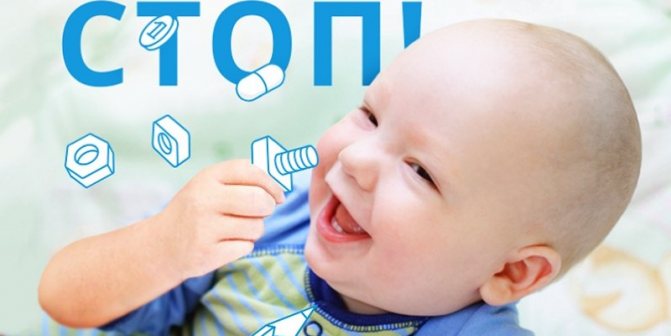
According to statistics, ambulances receive approximately three calls a day related to the fact that a child has stuck a foreign object up his nose. Providing first aid when various types of foreign objects get into the nose.
Ascorbinka
If a child puts a vitamin in his nose, you should not immediately try to pull it out, since it most often dissolves and comes out of the nose on its own with mucous secretions. When the ascorbic acid is large, you need to pinch the unclogged nostril and exhale forcefully through the clogged nostril.
It is important to warn him that inhalations are through the mouth and not the nose, otherwise it may aggravate the situation (it will get into the respiratory tract).
Tablet
If a child puts a tablet in his nose, the same manipulations should be carried out as with ascorbic acid. If you get into contact with a tablet intended for use by adults, you should immediately call an ambulance to avoid poisoning the child with potent drugs.
small toy
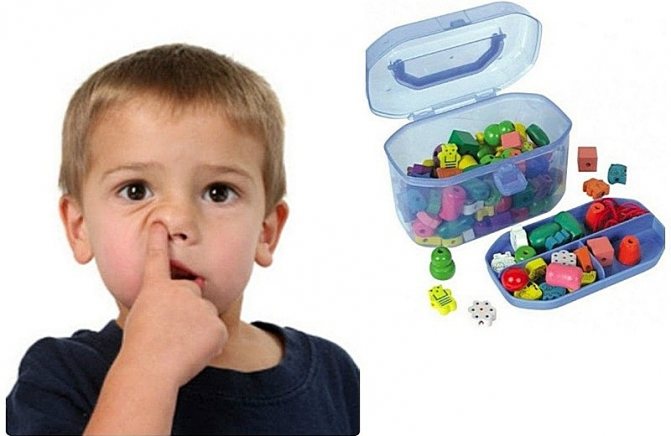
Most often, small toys, for example, Lego parts or wheels from cars, get into children's nasal passages. Without qualified assistance, it is practically impossible to remove such a small object.
Pieces of fruit, food
I often get fruit pits, nuts, peanuts, chewing gum, and candy into children’s noses. Food tends to decompose, so it is necessary to carry out rinsing with the help of medical personnel. Parents must control their children’s diet and make it as safe as possible.
Plasticine
If a child puts plasticine in his nose, then it is necessary to consult an otolaryngologist. Plasticine becomes soft in a warm place and if you try to remove it yourself, all the mucous membranes of the nose will be covered with it. Due to the chemical composition of plasticine, allergy medications should be given as a preventive measure.
Bean, pea, bead
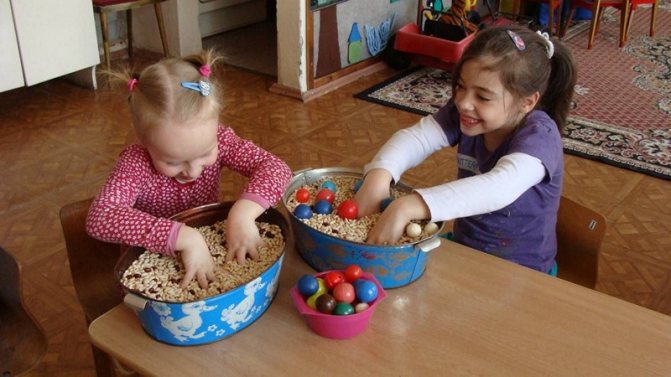
If small round products get into the nose, follow the same steps as with tablets. Parents often catch babies stuffing beads into their nasal passages. You should make sure that there is one bead in the nose and not a large number. When a child puts beans or other small round objects (buttons) up his nose, it is necessary to seek medical help.
Objects of natural origin are especially dangerous to stick into the nose. They begin to grow quickly in a humid environment.
Seed
If a child puts a seed in his nose, there is no need to panic, as it does not interfere with breathing in any way. But you should not let your child pull out foreign bodies on his own, otherwise he may push them even deeper. You can blow out the seed by inhaling air through your nose, or consult a doctor.
How to correctly determine that a child has put a foreign object in his nose?
When a child cannot yet speak, it can be very difficult to identify an object caught in the nose.
Characteristic changes in the child’s behavior and appearance will help determine the presence of a foreign object in the nose:
- First of all, an “abnormality” of breathing is observed, since due to an obstruction in the nose, the child begins to breathe through the mouth (an identical sign may appear with inflammation of the adenoids).
- The baby puts his finger into his nose and constantly rubs it with his fist.
- Becomes moody, restless, complains of pain in the nose and headache.
- The skin around the nostril becomes red, mucus flows from it, and tears flow from the eyes.
- If the object has been in the nose for a long time, blood clots, pus may be present in the discharge, and there may be a smell of decomposition and rotting.
- The temperature is rising.
- The axillary area becomes inflamed.
- The body's olfactory functions sharply decrease.
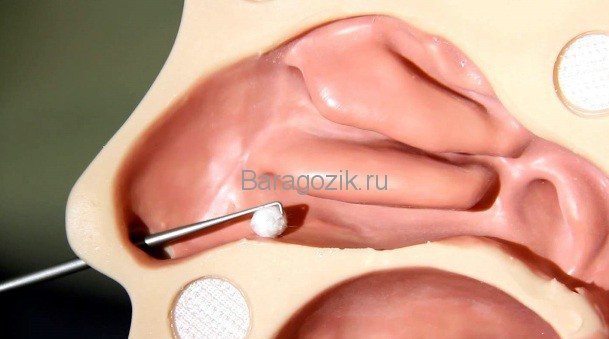
Foreign body symptoms, how it gets into the sinus and what it could be
The most common reason why a foreign body can be found in the maxillary sinus should be looked for in the dentist's office. We are talking about filling the upper jaw. The roots of the teeth are located close to the mucous membrane of the sinuses. When pressing, the dentist may not calculate the force and push a foreign object into the cavity. This can happen when installing a filling and when building up the wall of the upper jaw for subsequent implantation.
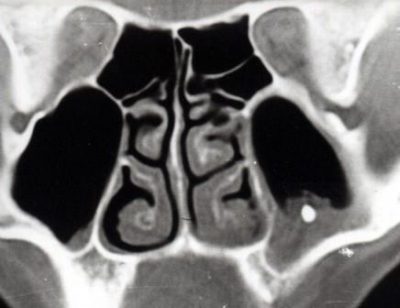
A foreign body is also commonly understood as cystic formations in the form of a thin bubble. The reason lies in private runny noses, when the mucous membranes become irritated.
Less common are cases of foreign bodies entering the sinuses when injured by a firearm. There are examples in the medical literature when part of a match or toothpick gets into the sinus when picking teeth. Children may have in their sinuses: construction parts, berry seeds, beads and other small objects.
When performing operations in the upper jaw and nasal passages, unscrupulous medical personnel may leave parts of tubes, threads and other materials in the maxillary sinuses.
After some time, the foreign object becomes covered with fungus and causes characteristic symptoms. An inflammatory process occurs. Before this, a person may not notice that there is a problem.
Symptoms of a foreign body entering the sinuses are similar to symptoms of sinusitis, sinusitis and other colds. The person feels the following:
- headache and heaviness, especially when tilting the head forward;
- runny nose;
- thermometer readings 38 and above;
- after sleep the patient feels a “heavy head”, and for many this symptom interferes with sleep;
- discharge of pus; has a putrid odor, and for this reason nausea is observed;
- sometimes toothache when moving the jaw;
- when blowing his nose, the patient feels relief;
- pain in the cheeks and under the eyes;
- decreased appetite and general weakness.
When a person comes to the clinic with such symptoms, the specialist is in a hurry to give him a diagnosis that is not related to the entry of a foreign body.
Only on an X-ray or on a computer screen during a tomography can a problem be detected.
Before this, doctors can treat sinusitis or other diseases for quite a long time and to no avail. Antibiotics and other antiviral drugs will not cope with the fungus, which covers the foreign body on all sides in the maxillary sinus.
Diagnostic measures
Comprehensive diagnostics includes the following activities:
- assessment of patient complaints, analysis of such indicators as the duration of symptoms, the presence of a visit to the dentist and other manipulations in the nasal and jaw area;
- examination using a nasal speculum;
- use of an endoscope to examine the nasal cavity and middle nasal passage;
- examination in the dentist's office of the upper dentition;
- X-ray image, which shows not only the presence of the body, but also pneumatization (presence of air);
- the use of computed tomography;
- consultation with a surgeon.
It is believed that surgery is the only way to remove a foreign body located in the maxillary sinus. It is advisable not to delay the operation and schedule it immediately after an accurate diagnosis. Lack of timely intervention can cause the development of meningitis, sore throat, sinusitis and osteoperiostitis (inflammation of the bones of the upper jaw and orbit).
Pneumatization of the sinuses is not a disease, but a term. With its help, doctors characterize phenomena on an X-ray image or on a tomography screen.
Pneumatization is the level of filling of the sinuses with air, which, under normal conditions, moves without obstruction through the nasal passages.
In the picture you can see that pneumatization:
- saved;
- reduced;
- increased.
In the first case, there are no deviations from the norm and most likely the cause of the disease is not a foreign object.
If a foreign body is present in the maxillary sinus, this will be indicated by a reduced level of pneumatization. At the same time, air circulates with difficulty, which leads to a decrease in oxygen supply to the body.
How to recognize symptoms of a foreign body in the nose of a child or adult in young children
As a rule, foreign bodies are localized in the common nasal passage.
However, there are situations when they end up in the lower or middle nasal passage, in the vestibule of the nose - or deep in the posterior sections of the nasal cavity, in the area of the choanae.
The main manifestations of symptoms of a foreign body in the nose
Let's look at the basic symptoms.
The clinical picture of a foreign body in the nose, which got there naturally (i.e. through the nasal passages), is often obvious. And sometimes the only sign of a foreign body entering the nasal cavity is nasal congestion on one side.
- The person immediately begins to experience discomfort in the form of tickling, a feeling of something foreign.
- He also sneezes.
- He has lacrimation and watery-mucous discharge from the nose.
But these symptoms, as practice shows, can be short-lived - and even disappear without making themselves felt for a long time. And in general, discomfort is not always considered the main symptom.
Pain. It develops in the nasal cavity itself, where, for example, a sharp piece of metal gets in - it injures the internal tissues of the organ and provokes hemorrhage, or another object. Your head, cheek, etc. may hurt.
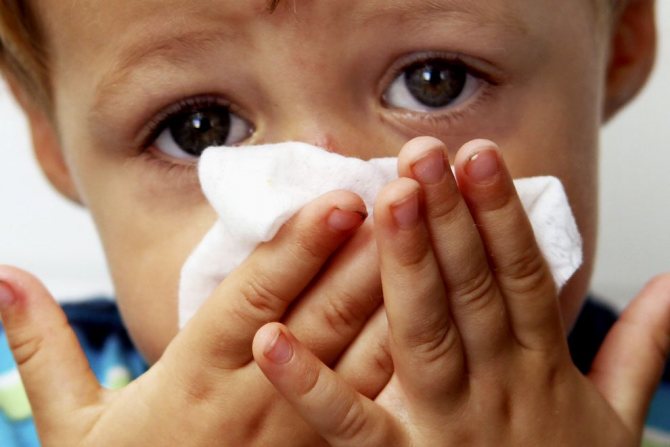
In addition, a person may suffer from:
- Dizziness.
- Sleep disorders.
- Increased irritability.
Children cry, are capricious, and become restless.
IMPORTANT: If attempts to remove a foreign body result in its advancement into the deeper parts of the nasal cavity, into the nasopharynx, it may even end up in the respiratory tract and esophagus.
How to remove a foreign body from a child's nose
How to remove a foreign body from a child’s nose? Only a doctor can remove a foreign body from the nose. If you do it yourself at home, you can only make the situation worse. And then you will have to treat the child for various complications. For example, a baby may get sinusitis.
See also
Symptoms and treatment of sinus cysts, possible surgery and consequences
Read
In particularly severe cases, surgery may be required. Not all children can easily tolerate surgery. Therefore, at the first sign of objects entering the sinuses, action must be taken to remove them.
An otolaryngologist can remove things that have gotten into the nose. If it is absent, you can contact a surgeon. You can also call an ambulance. In young children, the doctor performs endoscopic removal of foreign objects. It is produced with the help of painkillers. In some cases, even anesthesia may be required.
If you remove foreign bodies yourself, you still need to see a doctor. The otolaryngologist will examine the child and prescribe treatment to avoid contamination of the nasal mucosa with microbes or infection.
Common cases
If a baby puts a seed in his nose, it is worth protecting him from independently removing this foreign body. An older child may try to blow out the interfering object by blowing his nose. Under no circumstances should you suddenly pull him into you. Inhalations are made strictly through the mouth. If the seed has not penetrated deep into the respiratory tract, the arriving ambulance doctors can get it out using special elongated tweezers.
If a child falls asleep with plasticine in his nose, immediate action should be taken. Plasticine easily enters the nasopharynx in small quantities, making breathing difficult, causing allergic reactions and unwanted inflammatory processes. There is pain in the nostril area, redness of the eyes with a runny nose. Contacting an otolaryngologist is strictly necessary; he will help quickly eliminate the foreign body from the patient’s body.
There are cases when a toddler puts a round-shaped vitamin that resembles a bead (Revit, vitamin C) into his nose. If it is “settled” too deeply, you should not take any action; such a problem should be solved by medical specialists. If the round vitamin is not too deep in the nasal cavity, the child can blow it out, while taking in air strictly through the nose. To prevent the object from entering further into the nasal passage, you should pinch the wing of the nose from above the problem area. The actions will be similar if a cherry pit or nut gets into your nose.
Another child can put a pill up his nose. You cannot do without medical help in such a situation. Moreover, if it is not known what kind of drug it is and how it can harm health.
First aid if a child puts a foreign object in his nose
If a foreign body gets into your baby’s nose, you must perform the following manipulations:
- It is necessary to identify which nasal passage the foreign body has entered.
- Place baby drops into the baby's nose to constrict blood vessels (naphthyzin, Nazivin, Otrivin, Tizin, Nazol, Adrianol).
- After that, sit the baby on your lap face to face, close the free nostril with your finger and inhale sharply into his mouth. Do this repeatedly. Often this way the problem is solved.
- It is necessary for him to blow his nose on his own, of course, if the baby knows how to do it.
- Another way to get rid of a foreign object in the nose is to make your child want to sneeze. You can do this by giving him a sniff of special tobacco or black pepper.
Let's sum it up
A foreign body can get into the nostril in different ways. The disorder often does not show any signs, but causes some discomfort, similar to the symptoms of an incipient cold.
If you notice the first signals indicating the presence of foreign objects in the nose, you should consult a doctor
It is important to remove the particles in time so that they do not cause complications.
A foreign body of the nose is a foreign object that has accidentally entered the nasal cavity - a berry seed, a bead, a seed, a mosquito or other insect, a small part of a toy, a piece of plastic, wood, food, paper or cotton wool. A foreign body in the nose can occur without symptoms. Basically, this is manifested by pain, discharge from the affected half of the nose and one-sided congestion. Diagnosis of a foreign body in the nose is based on medical history, results of rhinoscopy, otolaryngological examination, radiography and CT data. The essence of treating a foreign body in the nose is to eliminate it as quickly as possible by blowing it out, surgical or endoscopic removal.
Most often, otolaryngologists diagnose foreign bodies in the nose in children. While playing, a child may intentionally insert various objects into his nose without thinking about the consequences. Foreign bodies that enter the nasal cavity in this way are, as a rule, located in the lower nasal passage. Among the total number of foreign bodies in the nose, such cases account for 80%. Much less common are foreign objects in which one half is stuck in the nasal septum and the other in the inferior turbinate. Foreign bodies that accidentally enter the nose are often localized very deeply.
Classification of foreign bodies in the nose
Foreign bodies in the nose are extremely varied in size, shape and character. Thus, foreign bodies of the nasal cavity are classified into:
- metal (screws, coins, parts of a metal construction set, nails, needles, fragments of firearms, buttons);
- inorganic (beads, plastic parts, pebbles, beads, pieces of glass, cotton wool);
- live (larvae, insects, roundworms, leeches);
- organic (peas, seeds of various plants, parts of food products, small beans, fruit seeds, pieces of vegetables and fruits).
Also, foreign bodies of the nose are divided into radiopaque and radiopaque, depending on whether they are visualized during X-ray examination or not. Radiopaque bodies include glass, metal objects, bones, parts of toys, and buttons.
Complications of a foreign body in the nose
Foreign bodies in the nose lead to difficulty in nasal breathing and poor ventilation, which further provokes inflammatory changes in the paranasal sinuses. Prolonged stay of a foreign body in the nose can cause ulceration of the mucous membrane, necrosis of the nasal concha, the development of polypous growths, disorders of the lacrimal duct, and suppuration of the lacrimal sac.
In turn, the addition of a secondary infection provokes the development of purulent rhinosinusitis, and in some cases osteomyelitis of the bone structures of the nose. In addition, there are severe cases when a foreign body in the nose begins to perforate its wall. That is why, at the first symptoms of a foreign body in the nose, you should immediately consult a specialist.
Prevention
You can prevent a foreign body from getting into your ear by carefully following the safety rules:
- small items should be stored out of reach of the baby;
- toys must be appropriate for the child’s age and not pose a danger to the baby;
- broken toys should be thrown away promptly;
- provide proper hygienic care for your baby’s ears;
- When swimming in open water, cover your ears with a special cap.
Dr. Komarovsky talks about what to do if a foreign body gets into a child’s ear:
